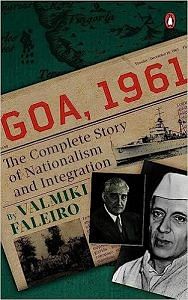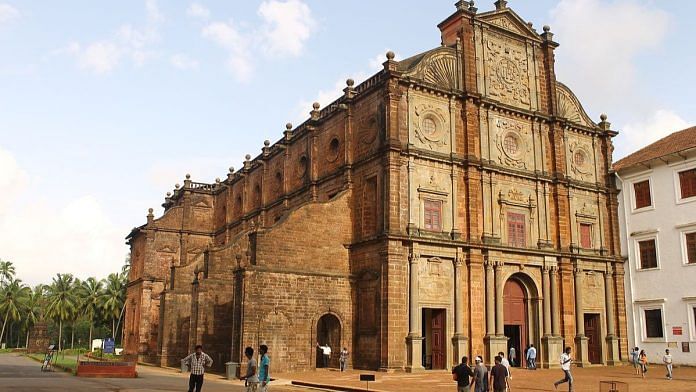The French, with four small enclaves (Pondicherry and Karaikal on the Tamil coast, Yanam on the Andhra coast and Mahe on the Kerala coast—Chandernagar north of Calcutta had merged with India in June 1949), negotiated with India, secured some guarantees for the people of their possessions and gracefully left after signing a bilateral treaty with India on 28 May 1956. India expected Portugal to follow suit. That did not happen.
The land-locked state of Hyderabad, which had signed a one-year standstill/status quo agreement with India, desperately needed a seaport to realize the Nizam’s secret dream. Once the richest man in the world—he famously used the famous Rs 438-crore Jacob diamond that he had found in his father’s shoe as a paperweight— the Nizam offered to buy Goa. The Portuguese spurned the offer and said it could neither cede nor lease (não alienava nem arrendava) and reportedly made a counterproposal that negotiations similar to those between South Africa and Portugal (on a similar question) could be arranged.
Dr P.D. Gaitonde also quotes a special adviser to Portugal’s Permanent Mission at the United Nations who spoke of a plan to smuggle in arms, ammunition and other war material from Alexandria to Indian princely states (to resist accession to the Union of India) in vessels of a dummy shipping company registered under the Panamian flag via Goa. The Nizam and his friends were all for the idea negotiated by private individuals in London. Portugal’s Ambassador in London, Palmella, scotched rumours of Portugal’s talks with the Nizam through Sir Alexander Rogers acting on behalf of the Nizam. Portuguese foreign minister, Caeiro da Mata, categorically told India’s high commissioner to London, Krishna Menon, in Paris on 24 July 1948, that Portugal had no direct or indirect contact with the Nizam.
The Goan Political Conference held in Bombay on 21 and 22 June 1947 denounced the move of the Nizam to buy Goa. Gandhi said the Indian Union would not allow such a transaction. The National Standard of Bombay wrote:
The [Goan Political] Conference has also warned the Portuguese government and the colonial authorities against entering into any negotiations with the Nizam’s government in the transference in any manner of any strip of land to His Exalted Highness.
Although infuriated by the Nizam’s actions in 1948, Nehru later only made a passing reference to it. In the words of army commander Lt Gen. Eric A. Vas, a Goan with origins in Saligao:
When the partition of India took place … Indian princes [were] bound by special treaty relations with the British Crown, which exercised its domain over them under the Doctrine of Paramountcy. This doctrine … conceded no independent status to any prince. The Indian successor Government could not be expected to accept a position which its predecessor had rejected for good reason.
A month before the partition, Lord Mountbatten, the last Viceroy of undivided India, addressing the princes for the last time in his capacity as the Crown Representative had advised them that practical considerations left them only with the choice of accession either to India or Pakistan subject, among other considerations, to the factor of geographical contiguity.
Also read: Here’s history of Portuguese violence in Goa: Shefali Vaidya’s rebuttal to ThePrint column
In other words, Indian princes were to join whichever nation abutted their territory and only in case both India and Pakistan adjoined their land (e.g., J&K) would they be free to join either country—and that in no circumstance would Britain confer dominion status on any princely state. Hyderabad, a Hindu-majority state, was fully within India. Yet its Muslim ruler asked India for one year’s time and then plotted to buy Goa, have his own seaport and join Pakistan as the third wing of that country. Nehru was incensed at this transparent betrayal of trust.
The Portuguese occupation of Goa was a double insult for Indian nationalism. Portugal called her possessions in India ‘Estado da Índia’ (State of India), thereby implying two Indias on the world map. Author Emil Lengyel notes in the book Krishna Menon:
… that was another insult, indicating that there were two Indias on this globe, only one of which had for its capital New Delhi. The ‘other India’ had for its capital the city of Pangim … These very names were bound to affront Indian sensibilities… Goa was the last remaining reminder of the past humiliation of the subcontinent. There, hated colonialism still conducted itself in the spirit of olden days, ruffling Indian patriotic sentiment. And Portugal itself, ruled by its apparently perennial Prime Minister, Dr Antonio de Oliveira Salazar, was in every way the social, political and economic antithesis of democratic, socialist India.
Salazar’s Portugal was also considered particularly obnoxious for another reason. Indians were familiar with Africa, the ‘Dark Continent’, and they knew that it was darkest wherever Portugal ruled. It was an anomaly and an abomination to have a slice of Portugal right in the core-land of progressive-minded India. But what was New Delhi to do? It was dedicated to the policy of non-violence.

This excerpt from Valmiki Faleiro’s ‘Goa, 1961: The Complete Story of Nationalism and Integration’ has been published with permission from Penguin Random House India.



